Czechoslovakia was founded on the disintegration of the Austro-Hungarian Empire at the end of World War I. In 1917, in Pittsburgh, the first president of Czechoslovakia, Tomáš Garrigue Masaryk and other Czech and Slovak politicians, convened to establish a state in which the two nations were equally represented, and thus Czechoslovakia was established.
But many Slovak were against this unification. In 1939, the first Slovak Republic was founded with the encouragement of German President Adolf Hitler. However, in 1945, the Soviet Union, which invaded the region at the end of World War II, founded the Czechoslovak Socialist Republic.
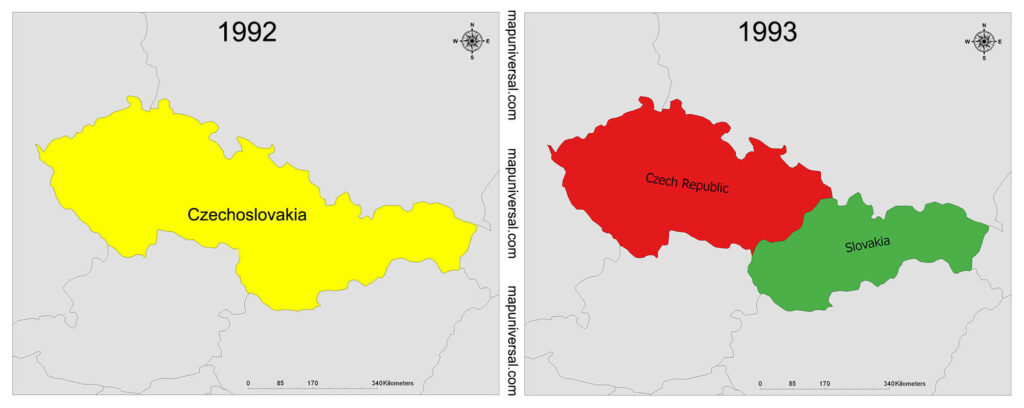
History of Czechoslovakia
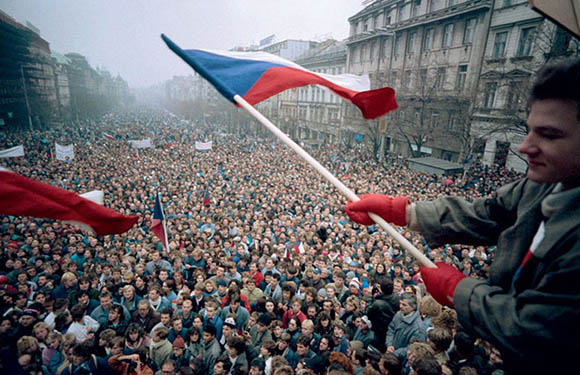
The idea of combining the Czechs and Slovaks, which were two separate brotherly and ethnicly separate nations that had lived since centuries, as a single state, was introduced in the 19th century, but could only be realized after the First World War.
The borders between Czechoslovakia and neighboring countries established in 1918 were determined by the treaties of Versailles, Saint Germain and 1920 Trinon. But there were a significant number of minorities within these borders (Germans, Hungarians and others). This ethnic structure was the main cause of the political crises between the two world wars.
Benesh, who was elected president in 1935 instead of Masaryk, was under the increasing political pressure of the Germans. At the 1938 Munich Conference, it was decided to break up the country.
The places would be given to Germany where the majority of Germans would be, Slovakia would be autonomous, and some land would be left to Poland and Hungary. These decisions took place in 1939 and the German invasion began. Bohemia and Moravia came under German rule, and Slovakia was granted autonomy.
In 1942, German governor Hydrich in Czechoslovakia was killed by supporters of the Czech Liberation Movement. A heavy response was given by Germany, and some people of the town of Lidice were destroyed. In 1945, with his salvation, Benesh returned from London. But he had to retire shortly after.
In 1948 the coalition government of Klement Gottwall, which included communists, was established. In 1960, the current socialist republic was approved.
In 1968, he became the first secretary of the party and launched a liberalization policy in the country. The armies of the Warsaw Pact, which opposed it, invaded the country. Dubcek was dismissed. The resistance movements that began in the country were violently suppressed. Dubcek was replaced by Dr. Gustav Husak. Thus, the period of liberalization, called the Prague Spring, ended.
Husak strengthened relations with the Soviet Union and showed his loyalty to the Warsaw Pact. He abolished the reform movements and liquidated the opposition forces from the Party.
In 1975, he assumed the position of president. In the period of Husak, cultural life was negatively affected by political liquidation within the Party, and many intellectuals went abroad. Many intellectuals who were opposed to Husak were prosecuted.
Chaos in Czechoslovakia
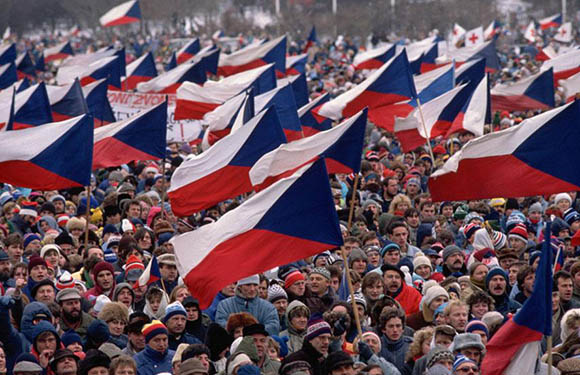
In 1977, a group of intellectuals published 77 Declarations. This attempt was hardly suppressed. Although the church did not support 77 events, it began to oppose oppressive rule in 1982 and demand independence. In 1983, the intellectuals argued that reform movements in the Eastern Bloc countries and the USSR should be supported.
Husak also reported that they are following the reforms, but the implementation is dependent on domestic conditions. In 1987, with the visit of the USSR president Gorbachev to Czechoslovakia, the hope that the reform movements in the country would resume.
In December of the same year, Husak resigned as general secretary and was replaced by Milos Jakes. The new administration also implemented a program that is closely linked to the USSR. However, in 1989, the demands and demonstrations of the people towards the reforms in the Eastern Bloc countries increased.
On November 20, 1989, a large mass of 200,000 people was held in the capital city of Prague. Demonstrators called for an end to communist rule and an election. The Communist Party rulers resigned over the rising protest movements. Milos Jakes was expelled from the Party, and Marian Calfa was replaced by the resigned Prime Minister Adamec. In December 1989, the non-communists in the newly formed government gained supremacy over the communists.
In 1977, Vaclav Havel, the dissident playwright, who was prosecuted in the incidents and was sentenced to a heavy prison sentence in 1979, was appointed president. President Havel brought M. Calfa to the prime ministry. As a result of a resolution adopted in 1992, the Czechoslovak State became involved in history when Czechoslovakia decided to split into Czech and Slovak states on 1 January 1993.
Velvet Revolution
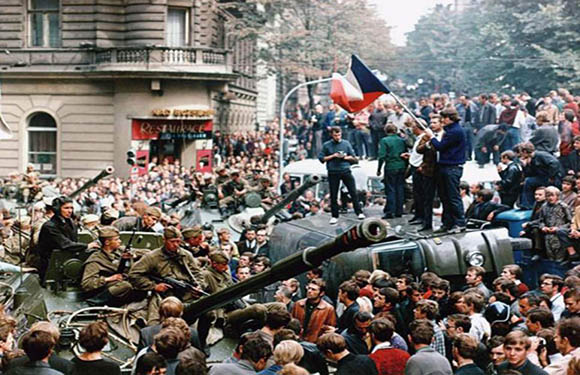
The Velvet Revolution is a student and popular uprising in Czechoslovakia between 17 November and 29 December 1989. It was named as the velvet revolution by the media because no blood was spilled in the subsequent demonstrations. As a result of the uprising, the communist rule was abolished and Czechoslovakia was divided into Slovakia and the Czech Republic.
The uprising, which started as a peaceful student demonstration (International Students Day) on November 17, was suppressed by police intervention. People believed that this attack of the police was actually an attack on the freedom of thought of the students, and the student events spread to Czech and Slovak cities and became even more flamed and turned into a big uprising.
Supporters of the uprising, which started as a small student uprising, reached half a million people from the demonstration community, which was 200,000 people. These half a million people have recently organized a demonstration with the participation of all Czechoslovak people. As a result of this demonstration held on November 27, the public took a general strike and took to the streets. This uprising resulted in the plundering of all public institutions and organizations.
With the fall of the Communist government, a democratic election was held in June 1990 for the first time in 44 years. Opposition playwright Vaclav Havel, one of the pioneers of the revolution, was brought into the government as President with the free elections held in the Czech Republic for the first time in the Czech Republic in 40 years. In fact, the formation of the revolution, though not bloody, has been very bloody.
The Velvet Revolution caused Czechoslovakia to be divided into Slovakia and the Czech Republic. This bloodless revolution, in fact, could not keep its validity. Because the Russians who supported the communist regime could not tolerate the establishment of a pro-American government. Finally, Russian tanks intervened in Czechoslovakia.
Czechoslovakia Flag Map
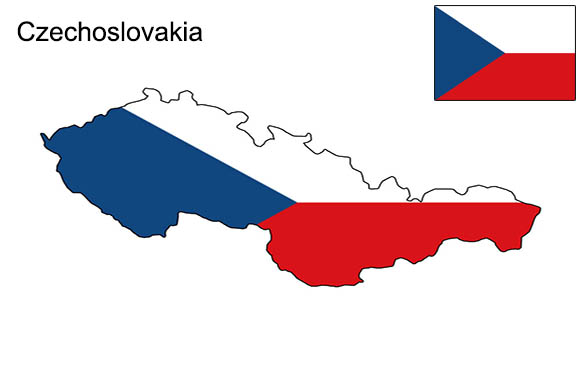
The flag of the Czech Republic is the same as the old Czechoslovak flag. In the aftermath of the disintegration of Czechoslovakia, Slovakia adopted a new flag, while the Czech Republic maintained this flag due to its historical ties. The colors of the red and white national and Bohemian banners are the main colors of the flag. Because the flag used for many years has the same characteristics as the Polish flag, and the same colors as the Austrian flag, a blue part has been added.
This new flag of Czechoslovakia was approved by the National Assembly of Czechoslovakia on March 30, 1920, and became an official flag. Starting from this time – the three-color Czechoslovak flag is used, except for the years of World War II.